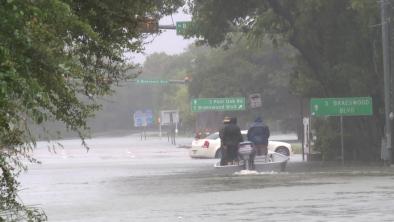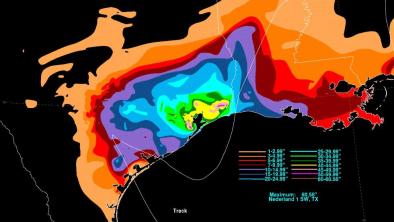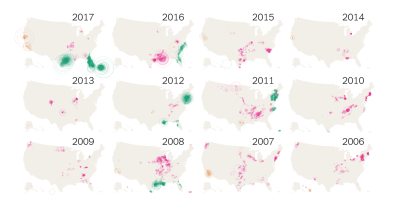A Spatial and Temporal Investigation of Medical Surge in Dallas-Fort Worth During Hurricane Harvey, Texas 2017
Study key findings:
- Mass evacuations can lead to medical surges that stress healthcare systems hundreds of miles away from disaster zones
- This study finds that, in the month after Hurricane Harvey, emergency departments in at least 10 Dallas-Fort Worth hospitals experienced patient surges of 600 percent due to visits from Houston-area evacuees
Study abstract:
When 2017 Hurricane Harvey struck the coastline of Texas on August 25, 2017, it resulted in 88 fatalities and more than US $125 billion in damage to infrastructure. The floods associated with the storm created a toxic mix of chemicals, sewage and other biohazards, and over 6 million cubic meters of garbage in Houston alone.
During the study period overall, emergency department visits in the Dallas-Fort Worth area rose immediately by about 11% (95% CI: 9%, 13%), amounting to ~16 500 excess total visits before returning to the baseline on September 21, 2017. Visits by patients identified as residing in disaster declaration counties to Dallas-Fort Worth hospitals rose immediately by 127% (95% CI: 125%, 129%), amounting to 654 excess visits by September 29, 2017, when visits returned to the baseline. A spatial analysis revealed that evacuated patients were strongly clustered (Moran's I = 0.35, P < 0.0001) among 5 of the counties with disaster declarations in the 11-day window during the storm surge.
The observed increase in emergency department visits in Dallas-Fort Worth due to Hurricane Harvey and ensuing evacuation was significant. Anticipating medical surge following large-scale hurricanes is critical for community preparedness planning. Coordinated planning across stakeholders is necessary to safeguard the population and for a skillful response to medical surge needs. Plans that address hurricane response, in particular, should have contingencies for support beyond the expected disaster areas.
Related Content






